Central Presbyterian Church (Atlanta, GA)
1966 Schantz/1996 Parkey - 4 Manuals / 54 Ranks

Date
1996
Category
Custom Design (Opus), Renovations & RestorationsAbout This Project
In April of 1995, Parkey OrganBuilders was commissioned to complete the necessary renovation, re-engineering and tonal additions to the 4-manual, 48-rank Schantz (1966) pipe organ at Central Presbyterian Church in downtown Atlanta. This commission followed months of intense work with committees covering many aspects of the renovation. The organ builder was charged with a project that took the resources of the present organ and reconfigured them to fit the new surroundings and the increased musical needs of the church.
As the project moved forward, an acoustical study was done to ascertain precisely which were changes required for the sanctuary and organ. Parkey OrganBuilders’ first responsibility was the redesign and placement of the organ. The renovation committee then followed the recommendations of the music staff and organ builder to enhance the sanctuary’s acoustical response. Changes were also made to place the organ on a central axis of the room, replacing the previously less-than-ideal side chambers.
After the renovation committee addressed the “dry” acoustics of the room, the music committee pushed forward to address the expansion of the organ. The original organ design displayed the influences of the Germanic and Baroque revival style prominent during the 1960s and 1970s, including narrow pipe scales, low wind pressures, and an emphasis on upperwork. Though this has been a prominent and important style of organ building, many churches and musicians now wish to include music which requires a broader tonal palette. Parkey OrganBuilders had to reconsider the tonal design to successfully match the new additions with the organ’s existing resources. Many stops were rescaled and revoiced to achieve an optimal and cohesive tonal balance for the new installation. Irving G. Lawless of Hagerstown, Maryland, assisted with the tonal revision and final tonal finishing of the instrument. The new specification indicates the stops that were added or revoiced from the original organ.
Highlighting the front of the sanctuary is a new thirty-foot Mahogany case, housing the organ and the new 16’ Pedal Violon stop. In addition, a new 8’ Festival Trumpet was added to the Choir Division for the organ’s final flourish. The Schantz-Parkey organ now encompasses fifty-four ranks and four digital stops, giving sixty-three stops distributed over four manuals and pedal.
Dr. John Weaver played the dedicatory recital in October of 1996. It’s been played by a wide variety of artists including Joyce Jones, Faythe Freese, Sarah Hawbecker, Alan Morrison, Norman Mackenzie, and Raymond & Elizabeth Chenault. The instrument was used by various artists for concerts and evensong services during the Centennial Olympic Games in the summer of 1996.
